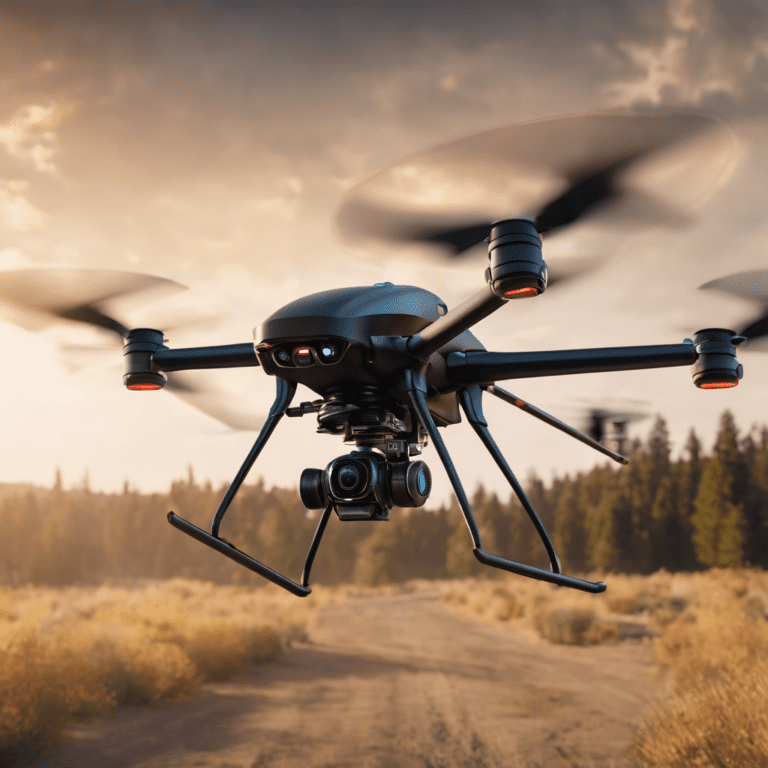How to Masterfully Land Drone on Boat: Expert Techniques Revealed!
To land a drone on a boat, you need to carefully adjust the altitude and speed of the drone using the controller, ensuring it lands gently and safely on the boat’s surface. Boats provide a challenging landing platform for drones due to their movement and instability, so it is crucial to minimize any sudden motions during the landing process.
Here’s a comprehensive guide on how to successfully land a drone on a boat while maintaining control and ensuring a smooth landing.
Choosing The Right Drone
Choosing the Right Drone:
When looking to land a drone on a boat, it is important to consider certain features of the drone that will ensure a successful landing. The first feature to consider is the size and weight of the drone. It is advisable to choose a compact and lightweight drone as it will be easier to handle and land on a moving boat. Additionally, look for a drone with advanced stability and hovering capabilities, as these features will contribute to a smoother landing experience. Another important feature is a drone with a reliable GPS system, which will help in maintaining precise positioning while landing on the boat. Lastly, consider drones that offer obstacle avoidance technology, as this will minimize the risk of collisions with objects on the boat or in the surroundings. By considering these features, you can choose the right drone that will ensure a safe and successful landing on a boat.
Benefits of Specific Models:
| Drone Model | Benefits |
|---|---|
| Model A | – Lightweight design for ease of handling |
| Model B | – Advanced stability and hovering capabilities for smoother landing |
| Model C | – Reliable GPS system for precise positioning |
| Model D | – Obstacle avoidance technology to minimize collisions |

Credit: issuu.com
Understanding Boat Landing Dynamics
Landing a drone on a boat can be challenging due to the dynamic nature of boats and the impact of wind and waves. Achieving precision in landing is crucial to ensure a safe and successful operation. The wind and waves can greatly affect the stability of both the drone and the boat, making it essential to understand their impact.
Wind can cause the drone to drift off course or interfere with its landing trajectory. It is important to consider the direction and speed of the wind when planning the drone’s landing. Waves, on the other hand, can create an unstable platform for the boat, leading to unpredictable movements and making it harder for the drone to land accurately.
To achieve a successful landing, pilots must take into account these environmental factors and adjust their approach accordingly. Precision is key when it comes to landing on a boat, as even a slight deviation can result in the drone missing the landing pad or crashing into the boat itself. Proper training, practice, and familiarity with both the drone and the boat’s dynamics are essential to master this skill.
Mastering Drone Control On Water
Landing a drone on a boat can be a challenging yet rewarding skill. It requires a mastery of drone control on water, where optimizing altitude and speed plays a crucial role. Utilizing GPS features is also important, as it enables precise navigation and landing. When landing a drone on a boat, it’s essential to maintain control and stability to ensure a safe landing. Practicing these techniques can help drone operators master the art of landing on a moving platform, opening up new possibilities for aerial photography, videography, and maritime operations.

Credit: orionmagazine.org
Advanced Landing Techniques
|
Landing a drone on a boat requires advanced techniques to ensure a smooth and safe landing. One method is using visual cues, which involves placing markers on the boat’s surface to assist with navigation. These markers can be brightly colored or have distinct patterns that are easy for the drone’s camera to recognize. By programming the drone to recognize and align with these visual cues, the landing process can be more accurate and efficient. Additionally, leveraging landing gear equipped with sensors and stabilizers is another effective technique. These sensors can detect changes in the boat’s movement and adjust the drone’s position accordingly, minimizing any potential jolts or disruptions during the landing process. These advanced landing techniques help drone pilots achieve successful landings on boats, expanding the possibilities for aerial filming and exploration. |
Safety Measures And Best Practices
Ensure safe drone landing on a boat by maintaining proper communication and coordination with the boat crew. Prioritize safety measures, including clearing the landing area and practicing landing maneuvers in calm conditions. Implementing best practices, such as using a spotter and maintaining a secure landing zone, can help prevent accidents and ensure a successful landing.
When landing a drone on a boat, it is crucial to prioritize safety measures and follow best practices. Maintaining line of sight with the drone throughout the landing process is essential to ensure a successful landing. By keeping the drone within your visual range, you can navigate any obstacles and adjust its trajectory accordingly. In case of an emergency, understanding the emergency landing procedures is crucial to prevent accidents or damage to the drone or boat.
The following safety measures can help in landing a drone on a boat:
- Choose a designated landing area on the boat that is clear of any obstacles or obstructions.
- Ensure that the boat is stable and not subject to excessive movement or rocking.
- Consider the wind conditions and make adjustments to the landing approach accordingly.
- Have a spotter who can assist in guiding the drone’s landing and provide necessary instructions.
- Practice landing procedures in a controlled environment before attempting to land on a moving boat.
Adhering to these safety measures and best practices will help you safely land your drone on a boat without any incidents or damage to the drone or boat itself.

Credit: issuu.com
Frequently Asked Questions For How To Land Drone On Boat
How Do You Catch A Drone On A Moving Boat?
To catch a drone on a moving boat, use a specialized net or a trained bird of prey. The net should be thrown over the drone, while the bird can be trained to grab it mid-air.
Can You Land A Drone On Water?
Yes, you can land a drone on water. Drones equipped with floats or waterproofing can safely land on water surfaces.
Can You Operate A Drone From A Boat?
Yes, you can operate a drone from a boat. However, be aware of weather conditions and regulations.
How Do You Manually Land A Drone?
To manually land a drone, first, make sure you have a clear landing zone. Reduce the throttle slowly and bring the drone down gradually. Keep an eye on its position and adjust as needed. Gently land it on the ground and power off the drone.
Conclusion
Landing a drone on a boat requires skill, precision, and careful planning. By implementing the tips and techniques discussed in this post, you can successfully execute this challenging task. With practice and patience, you’ll be able to capture stunning aerial footage with your drone from the deck of a boat.
Happy droning!

